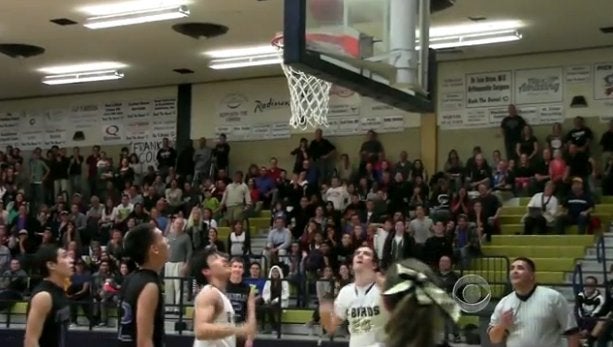
There's a basketball video going around featuring a developmentally disabled student included for the last game of the season. What could possibly be wrong with that? As a parent of an autistic child, I have to be wary. Why? Society marks people for being different. Society decides what is "normal" and that becomes the accepted standard. Anything "different" from that normal is segregated, either physically or emotionally, from the group.
When we think about discrimination, we usually assume that people who discriminate have bad intent. They must be ignorant, afraid or hateful. But discrimination often happens with good intentions, too, from acceptable patterns in society. So intentions don't matter. What matters is the effect on the people who are marked "not normal."
People who are seen as "not normal" first follow the pattern of complete invisibility, where they are kept separate and isolated, then society accords them partial visibility, where we agree to allow them in society in certain limited situations. Gay people have gone from invisible to partial visibility. Society denied they existed, then it became acceptable to have television shows featuring gay people, as long as it was for comic effect. Black people have gone from invisible -- separate schools, back of the bus -- to partial visibility, becoming U.S. President. But even becoming President comes with limitations. To be accepted, the black person had to be male, light-skinned and speak more like "us" than "them." In other words, a black President is now acceptable as long as he is closer to what society says is "normal" rather than "not normal."
That's where we come to this recent trend of partial visibility for the disabled in the high school video gone viral. A disabled student is elected homecoming queen or king. A disabled student is befriended and saved from bullying by a high school student. A disabled student is made part of a basketball game for a few shots. The intentions by the students are good -- there is no question. They want to include and help the disabled student. Partial visibility is better than invisibility, right?
But the effects of the partial visibility enforce the patterns of discrimination. The "normal" people are seen as the saviors. The "not normal" are seen as beneficiaries of "normal" people's help rather than fully appreciated for their own strengths or talents. The pattern is one of a Subject ("normal" person) acting on the Object ("not normal" person), who receives the benefits of the act. This pattern is merely a repeat of what happens in larger society. Objects are not seen as capable. Objects are not accorded full participation.
Those effects are the problem -- not the individuals involved, not the intentions of either party. The consequences of being seen as "Not Normal," of partial, limited visibility in society, of being seen as Object rather than a Person whose individual strengths and talents are lauded -- those are the consequences of discrimination.
That's what we must look out for. What will be the effects of this practice on this group? What will be the effect on me, my loved one, my child? Intentions aren't the problem. We have to think about the effects of practices to determine discrimination.
I want my child to be seen as a Subject, fully participating and fully visible -- because he already is a Person -- capable, strong and talented.